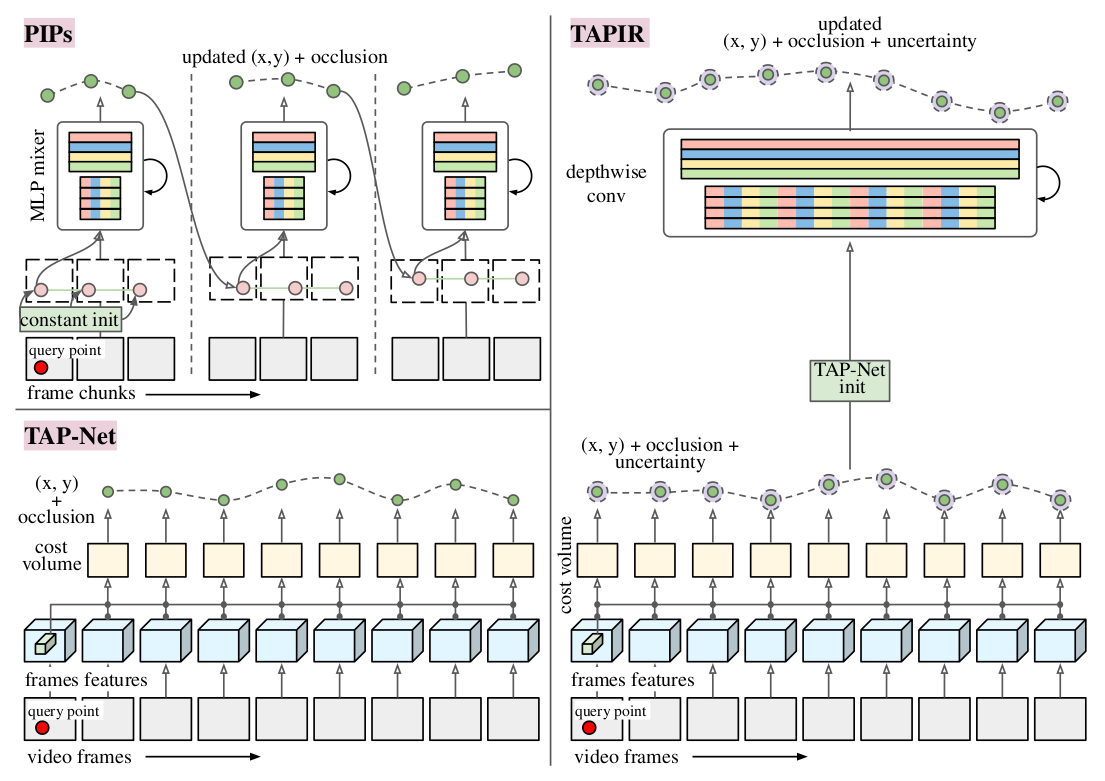Demos
TAPIR is open-source. We provide two online Colab demos where you can try it on your own videos without installation: the first lets you run our best-performing TAPIR model and the second lets you run a model in an online fashion. Alternatively, you can clone our codebase and run TAPIR live, tracking points on your own webcam; with a modern GPU, this demo can run in real time. Have fun!













